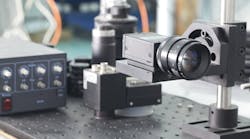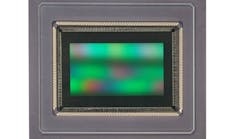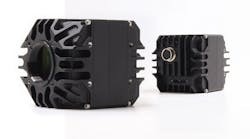Much has been written about the benefits of the 1394a FireWire interface standard and the camera vendors that support the standard (see Vision Systems Design, April 2002, p. 29). The standard is now being implemented by more than 20 camera vendors, and the 400-Mbit/s data-rate specification of the standard has gained popularity thanks to low-cost 1394a chipsets from Texas Instruments (TI; Dallas, TX, USA; www.ti.com) and others.
Camera vendors wanting to design 1394a solutions can buy a complete camera-control/PHY/LINK solution from TI in the form of the TSB15LV01 with the PHY TSB41BA3/2/1. For a more-flexible implementation, vendors can use the TSB12LV32, a general-purpose 1394a link-layer controller (GP2Lynx), and the TSB41BA3, a 1394b-2002 s400 three-port physical (PHY) layer device, or the TSB81BA3, an IEEE 1394b-2002-compatible s800 three-port cable transceiver/arbiter. Texas Instruments even supplies designers with a reference design for the 12LV32 and the 81BA3. According to Bob Welch, TI marketing manager, the company is working on a 12LV32/41BA3 reference design that will be available soon.
The IEEE 1394a standards successor, IEEE 1394b, has not fared as well. Although the 1394b standard upgrades 1394a to 800 Mbits/s and beyond, extends signaling distances to 100 m, and maintains backward capability with existing versions, chipsets that support the design are not yet commonly available. Although TI currently offers a PHY chip that supports 1394b, the company does not currently supply a general-purpose link-layer controller (LLC) to support 1394b, only a PCI-based Open Host Controller Interface LLC for the host node.
"Currently," says Welch, "many camera developers are designing in a GP2Lynx (TSB12LV32) and a 1394b PHY (TSB41BA3 or TSB81BA3). Although this will not achieve speeds of 800 Mbits/s, it does provide 100-m camera-to-computer connections. One customer is start-up FireWire-camera vendor Prosilica (Vancouver, BC, Canada; www.prosilica.com).
"While TI has a 1394b PHY chip, they have not developed a 'device-side' 1394b LINK chip. But for us, it does not really matter," says Marty Furse, Prosilica chief executive officer. "Because our first 1394b camera will operate within the speed limitations of 1394a, we can use a 1394b PHY and 1394a LINK to achieve the nonspeed advantages of 1394b (such as long cable length). The camera will have both 1394a (for legacy and for daisy-chaining with 1394a devices) and 1394b ports.
Beyond Texas Instruments
Some vendors, including Point Grey Research (Vancouver, BC, Canada; www.ptgrey.com), are not waiting for TI or any other semiconductor vendor to deliver parts for fully 1394b-compliant cameras. "We have developed our own 1394b LINK layer in an FPGA and have a prototype of a 1394b camera that will be shown at the VISION 2003 Show in Stuttgart, Germany, in October this year," says Vladimir Tucakov, a director of Point Grey Research.
Although the company has used TI's standard 1394b PHY device, the LINK device is implemented in an FPGA from Xilinx. According to Tucakov, the camera platform is designed to run at 800 Mbits/s and demonstrate a HDTV resolution of 1920 × 1080 pixels at 30 frames/s uncompressed." Other companies are also planning full 1394b implementations for cameras that will debut next year. Like Point Grey, domestic and Asian camera vendors are seriously considering FPGA designs because of the current lack of an available part from Texas Instruments.




